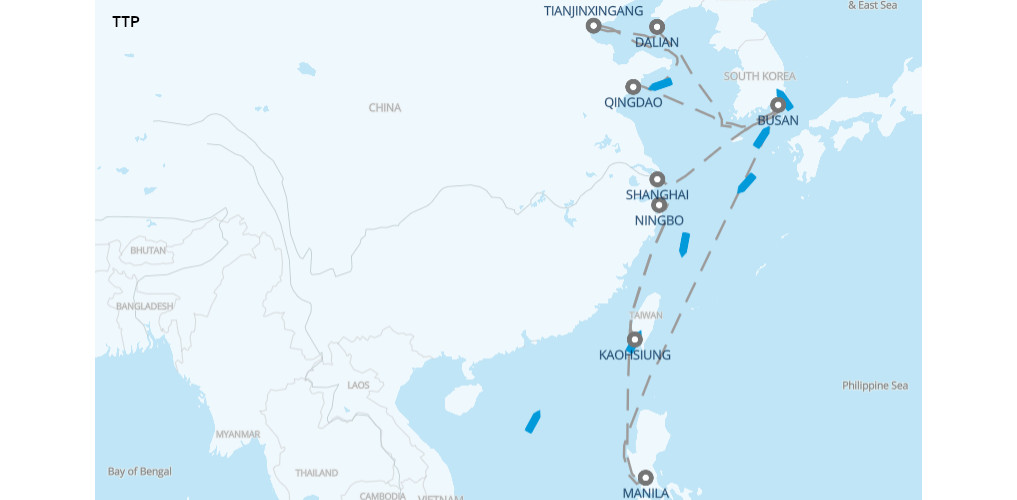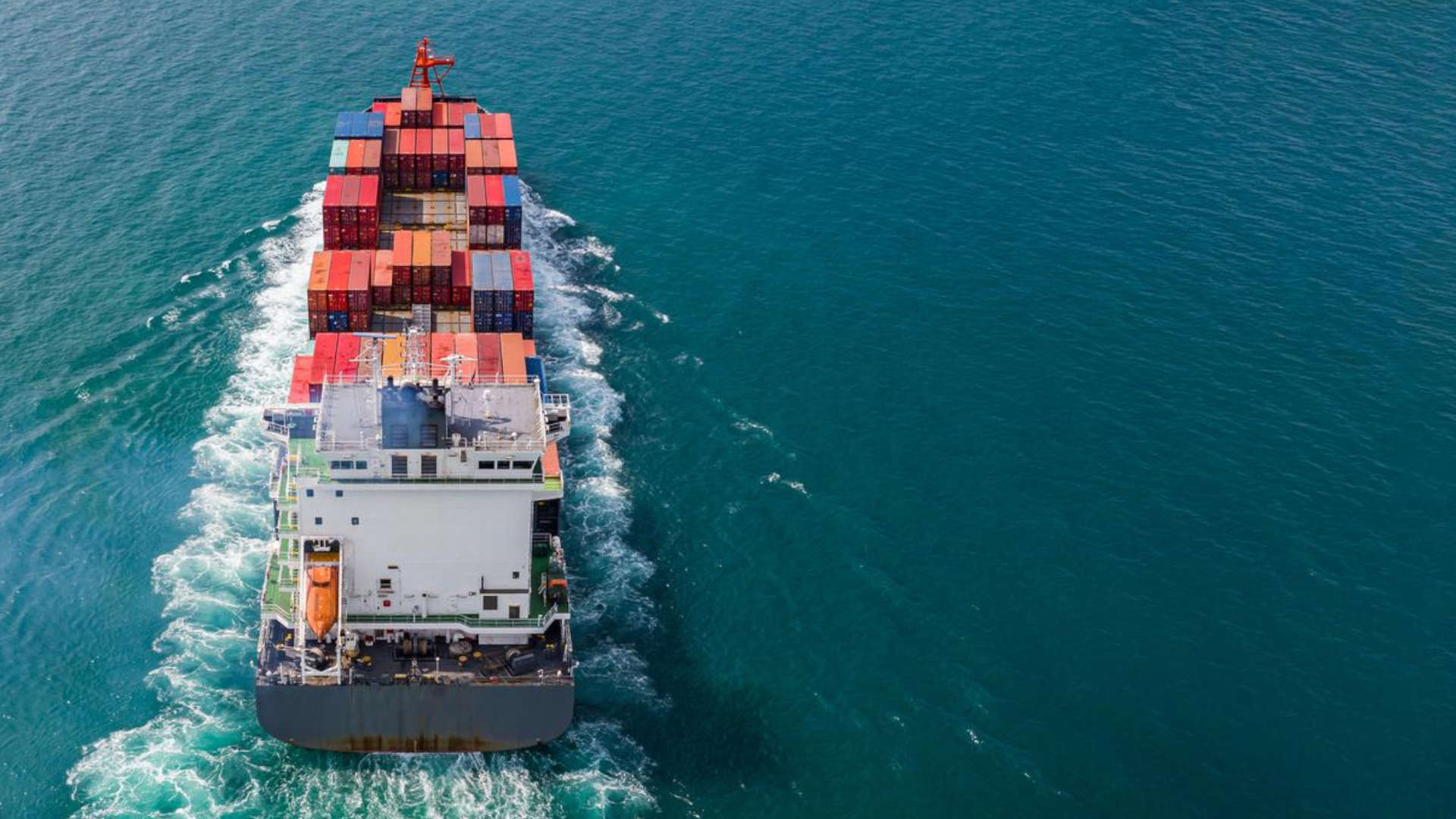Our bi-weekly carrier update brings you the latest news about the new and updated sea freight services our top carriers offer on main trade routes. It also covers relevant activities the carriers announced in the past two weeks.
New & updated services on main trade lanes
Asia <-> Africa
Later this month, container carriers Maersk & CMA CGM plan to revise the port rotation of their Safari/ Shaka 2 service.
As of 21 October, the liners will drop the port call at Hong Kong, and the new rotation will be as follows: Durban – Tanjung Pelepas – Shanghai – Ningbo – Shekou – Tanjung Pelepas – Port Louis – Durban. The first vessel to depart Durban on 21 October will be San Fernando.
There will be nine vessels deployed on the service, with an average vessel capacity of 8,700 TEU.
CMA CGM, Evergreen, OOCL and X-Press Feeders announced revising the port rotation of the Asia-East Africa, ASEA2 service - also named AEF, EAX3 and SMX.
The carriers added a port call at Qingdao and dropped the port calls at Tanjung Pelepas and Colombo. As of 28 September, the updated port rotation became: Singapore – Qingdao – Shanghai – Ningbo – Nansha – Singapore – Port Klang – Mombasa – Singapore.
For this service, the carriers are deploying seven vessels deployed with an average vessel capacity of 4,400 TEU.

Asia <-> Indian Subcontinent
A new port call at Karachi was added to Maersk’s FI3 service on 13 October. This service, which connects India with Korea, is now operating with the following rotation: Nhava Sheva – Pipavav – Karachi – Mundra – Colombo – Port Klang – Singapore – Qingdao – Tianjin Xingang – Busan – Port Klang – Nhava Sheva.
According to Sea Intelligence data, this service deploys seven vessels with an average vessel capacity of 7,000 TEU.
Asia <-> South America
Starting next month, ZIM will launch a new service, ZAT, connecting Asia to South America. Vela is planned to be the first vessel, with a departure date planned for 13 November.
ZIM will deploy eleven vessels on the service, with an average vessel capacity of 4,300 TEU and a port rotation comprising 12 port calls: Ningbo – Busan – Lazaro Cardenas – Buenaventura – Guayaquil – Callao – San Antonio – Busan – Tianjin Xingang – Qingdao – Shanghai – Ningbo.
Indian Subcontinent<->North Europ
ZIM will terminate the ZMI service, which port rotation is: Felixstowe - Rotterdam - Hamburg - Antwerp - Le Havre - Ashdod - Limassol - Haifa - Colombo - Nhava Sheva - Colombo - Haifa - Aliaga. The last vessel on this service departed from Mundra on October 11.
Indian Subcontinent <-> Middle East
The INDAMEX2/IN2 service, operated by CMA CGM and Hapag-Lloyd, will be revised next month as the carriers intend to drop the port call at Norfolk, USA.
The new rotation, which consists of Port Qasim – Mundra – Nhava Sheva – Jeddah - Charleston – Savannah – Port Qasim, will start on 11 November on board the vessel Suape Express. Nine vessels will be deployed on the service, with an average vessel capacity of 6,500 TEU.
In the meantime, CMA CGM intends to revise the BIGEX service this month. On 28 October, Spil Citra will be the first vessel on the new rotation, dropping the call at Chittagong. Following is the new rotation: Jebel Ali – Abu Dhabi – Umm Qasr – Ad Dammam – Abu Dhabi – Jebel Ali – Colombo – Mangalore – Nhava Sheva – Mundra – Jebel Ali.
Intra-Asia
Last week, HMM launched a new intra-Asia service under the title TTP. Four vessels with an average capacity of 4,700 TEU are deployed on this service, and the port rotation is: Dalian – Tianjin Xingang – Qingdao – Busan – Shanghai – Ningbo – Kaohsiung – Manila – Busan – Dalian.

Mediterranean/Black Sea <-> North America
ZIM updated its ZCA service in September to include a port call in Alexandria. The vessel Melina was the first on this rotation, which now sails as follows: Halifax - New York - Norfolk - Savannah - Valencia - Barcelona - Alexandria - Mersin - Ashdod - Haifa - Aliaga - Piraeus - Genoa - Barcelona - Valencia - Halifax.
More in carrier news…
Carriers started this month with somewhat unpleasant news from the European Commission, which announced its decision to end the Consortia Block Exemption Regulation (CBER) on 25 April 2024. The CBER is a legal framework governing vessel-sharing agreements - also known as alliances – that exempted ocean carriers with a combined market share of below 30% from certain competition rules. With the lifting of this regulation, these shipping companies will from next year no longer enjoy a decades-long exemption from EU rules against anti-competitive agreements.
Nevertheless, the media was not short on news about the major investments leading carriers are making in assets, sustainability and technology.
For example, following CMA CGM’s acquisition of two key New York terminals, the French giant announced renaming the facilities to Liberty New York and Port Liberty Bayonne. In addition, the carrier plans to invest nearly $600 million to upgrade the two facilities with the purpose of increasing their capacity by 80% and creating 1,000 new jobs.
Meanwhile, Hapag-Lloyd and Maersk stepped up their decarbonisation game with new ships powered by alternative fuel. The German carrier welcomed its brand-new Berlin Express earlier this month in a grand celebration. This vessel is the company’s first LNG-fuelled ultra-large container ship with a capacity of 23,664 TEU. News also highlighted that Maersk is in the market for 15 new methanol-powered container ships.
Both carriers, along with Japan’s largest shipowner Mitsui OSK Lines (MOL), are equipping their fleet with Starlink satellite internet technology. Hapag-Lloyd and MOL announced they are rolling out the technology across their entire fleet after successful test trials. Similarly, Maersk has signed an agreement to add SpaceX’s satellite internet for all vessels it operates.






